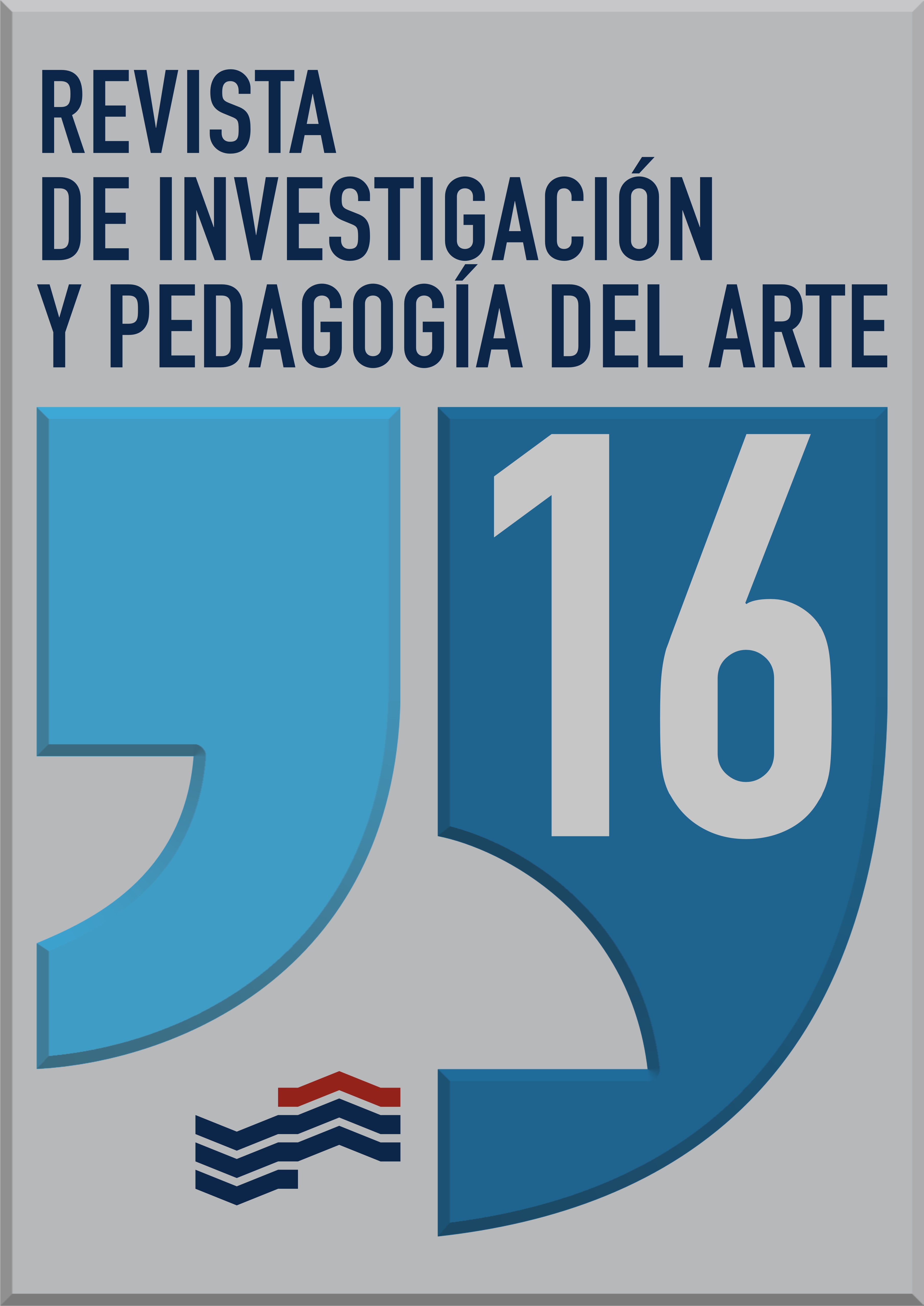The contrapuntal music of the Baroque Period. Area of opportunity in the training of the academic pianist
DOI:
https://doi.org/10.18537/ripa.16.03Keywords:
baroque music, contrapuntal texture, music education at a higher level, effective practice strategies, baroque styleAbstract
This article presents the results of a study that aimed to identify the areas of opportunity exhibited by piano students at a higher-level in the study and interpretation of works with contrapuntal texture from the Baroque Period. For this purpose, the authors implemented a mixed methodology represented by a questionnaire integrated by closed and open-ended questions that was applied through the survey technique to piano students from three academic programs in Mexico. The results indicate that students like this type of music, however, they exhibit areas of opportunity that include a significant lack of knowledge of composers, works and performers of this style, as well as limited management of effective practice strategies and an important lack of information concerning stylistic aspects that allow them to carry out a satisfactory interpretation of this music. In conclusion, the authors consider instructors must promote holistic teaching-learning processes that contribute to a more comprehensive training of the future professional pianist.
Downloads
References
Atmadja, S. A. (2012). A Guide to Selected Resources on Memorization Techniques for Pianists: An Annotated Bibliography. [Disertación Doctoral]. West Virginia University. https://researchrepository.wvu.edu/cgi/viewcontent.cgi?article=5864&context=etd
Bach, C.P.E. (1948). Essay on the True Art of Playing Keyboard Instruments. W. W. Norton & Company.
Banowetz, J. (2021). The performing pianist’s guide to fingering. University Press.
Barry, N. (1990). The effects of practice strategies, individual differences in cognitive styles, and sex upon technical accuracy and musicality of student instrumental performance (Publicación No. 9100056) [Tesis doctoral]. ProQuest Dissertations Publishing.
Benavides Sotomayor, A. (2008). Rol del análisis musical en la enseñanza del piano a nivel universitario: coherencia con las teorías del aprendizaje en adultos y su incidencia en la pedagogía del piano. El clave bien temperado de J. S. Bach como estudio de caso [Tesis de maestría no publicada]. Pontificia Universidad Javeriana. Recuperado de https://repository.javeriana.edu.co/handle/10554/22082
Bernstein, S. (1981). With your own two hands. G. Schirmer, Inc.
Berr, B. (2010). The end is where we start from. American Music Teacher, June-July, 56.
Berrocal de Luna, E, y Expósito López, J. (2011). El proceso de investigación educativa II: Investigación-acción. En R. López Fuentes (Coord.), Innovación docente e investigación educativa. Máster Universitario de educación Secundaria Obligatoria y Bachillerato, Formación Profesional y enseñanza de Idiomas (pp. 35-50). Grupo Editorial Universitario.
Bonneville-Roussy, A. y Bouffard, T. (2014). When quantity is not enough: Disentangling the roles of practice time, self-regulation and deliberate practice in musical achievement. Psychology of Music, 43(5), 686-704. https://doi.org/10.1177/0305735614534910
Bugos, J. A. y High, L. (2009). Perceived versus actual practice strategy used by older adult novice piano students. Visions of Research in Music Education, 13. http://www-usr.rider.edu/~vrme/
Capistrán-Gracia, R.W. (2015). Importancia de las Estrategias de Práctica Instrumental y Vocal en la Formación del Músico Profesional: Revisión de Literatura. Revista Electrónica de LEEME, 17-30. https://ojs.uv.es/index.php/LEEME/article/view/9871
Capistrán-Gracia, R.W. (2017a). No sé cómo practicar. Propuesta metodológica para la práctica instrumental efectiva. ArtsEduca, 16, 9-31. http://www.e-revistes.uji.es/index.php/artseduca/article/view/2366
Capistrán-Gracia, R.W. (2017b). ¿Cómo enseñan nuestros profesores de instrumento musical? Situación de la enseñanza de estrategias de práctica efectiva en seis escuelas de música en México. Revista Electrónica Complutense de Investigación en Educación Musical, 14, 213-237. https://revistas.ucm.es/index.php/RECI/article/view/53381
Capistrán-Gracia, R.W. (2017c). La práctica musical efectiva. Revisión de literatura, resultados de investigación y propuesta metodológica. Editorial UAA. ISBN 978-607-8523-09-2. https://editorial.uaa.mx/catalogo/cac_rc_practica_musical_efectiva_9786078523092.html
Chang, C. (2008). Fundamentos del estudio del piano. http://www.pianopractice.org/spanish.pdf
Cheng, C. (2019). Baroque Pianism: Perspectives on Playing Baroque Keyboard Music on the Piano, with Emphasis on Bach’s Fugues in the Well-Tempered Clavier. [Tesis de Doctorado]. The City University of New York. https://academicworks.cuny.edu/cgi/viewcontent.cgi?article=4447&context=gc_etds
Copland, A. (2005). Cómo escuchar la música. 3ª ed. Fondo de Cultura Económica de España.
Corral, Y. (2010). Diseño de Cuestionarios para Recolección de Datos. Revista Ciencias de la Educación, 20(36), 152-168. http://servicio.bc.uc.edu.ve/educacion/revista/n36/art08.pdf
Couperin, F. (2008). Art of Playing the Harpsichord. Alfred Music Publishing.
Cuartero, M. y Payri, B. (2010). Tipos de memoria, aptitudes y estrategias en el proceso de memorización de estudiantes de piano. Revista Electrónica de LEEME, 26, 32-54. https://ojs.uv.es/index.php/LEEME/article/view/9817
De Torres y Martínez Bravo, J. (1701). Reglas Generales de Acompañar en Órgano, Clavicordio, y Harpa, con solo Saber Cantar la Parte, ò un Baso en Canto Figurado. Imprenta de Música.
Duke, R. A., Simmons, A. L. y Davis Cash, C. (2009). It’s not how much; it’s how. Characteristics of practice behaviour and retention of performance skills. Journal of Research in Music Education, 56(4), 310-321. https://www.jstor.org/stable/40204936
Ericsson, K. A., Krampe, R. T. y Tesch-Romer. (1990). The role of practice and motivation in the acquisition of expert-level performance in real life. En M. J. A. Howe (Ed.), Encouraging the Development of Exceptional Skills and Talents (pp. 109-130). British Psychological Society Books.
Escobar-Pérez, J. y Cuervo-Martínez, A. (2008). Validez de contenido y juicio de expertos: una aproximación a su utilización. Avances en Medición, 6, 27-36. Recuperado de https://www.researchgate.net/publication/302438451_Validez_de_contenido_y_juicio_de_expertos_Una_aproximacion_a_su_utilizacion
Ferguson, H. (1975). Keyboard Interpretation From the 14th to the 19th Century: An Introduction. Oxford University Press.
Flavell, J. H. (1976). Meta-cognitive aspects of problem solving. En L. B. Resnick (Ed.), The nature of intelligence (pp. 231-235). Erlbaum.
Gaunt, H. (2008). One-to-one tuition in a conservatoire: the perceptions of instrumental and voice teachers. Psychology of Music, 36, 215-245. https://doi.org/10.1177/030573560933946
Hallam, S. (1995). Professional Musicians’ Approaches to the Learning and Interpretation of Music. Psychology of Music, 23(2), 111-128. https://doi.org/10.1177/0305735695232001
Hallam, S. (1997). What do we know about practising? Towards a model synthesizing the research literature. En H. Jorgensen y A. Lehman (Eds.), Does Practice Make Perfect? Current Theory and Research on Instrumental Music Practice. (pp. 179-31). Oslo: Norges musikkhogskole Publikasjoner.
Hallam, S. (2001). The development of metacognition in musicians: Implications for education. British Journal of Music Education, 18(1), 27-39. https://doi:10.1017/S0265051701000122
Hinson, M. (2006). Performance Practices in Baroque Keyboard Music. Alfred Music.
Jiang, Y. (2019). Typical Problems of Piano Playing of Students Majoring in Music in Normal University. Proceedings of the 2019 3rd International Conference on Education, Management Science and Economics (ICEMSE 2019). https://doi10.2991/icemse-19.2019.65
Jorgensen, H. (2000). Student learning in higher instrumental education: who is responsible? British Journal of Music Education, 17(1), 67-77. https://doi:10.1017/S0265051700000164
Jorgensen, H. (2004). Strategies for individual practice. En Williamon, A. (Ed.), Musical Excellence: Strategies and Techniques to Enhance Performance. (pp. 85-104). Oxford University Press.
Koopman, C., Smith, N., de Vugt, A., Deneer, P. y den Ouden, J. (2007). Focus on practice-relationships between lessons on the primary instrument and individual practice in conservatoire education. Music Education Research, 9(3), 373-397. https://doi.org/10.1080/14613800701587738
Kostka, M. J. (2002). Practice expectations and attitudes: A survey of college-level music teachers and students. Journal of Research in Music Education, 50(2), 145-154. https://doi.org/10.2307/3345818
Laukka, P. (2004). Instrumental music teachers’ views on expressivity: a report from music conservatoires. Music Education Research, 6(1), 45-56. https://doi.org/10.1080/1461380032000182821
Rosen, Ch. (2002). Piano notes: the world of the pianist. Free Press.
Shamagian, M. (2007). Metodología de la enseñanza del piano (2ª. ed., Vol. 1). Dos acordes.
Simones, L., Rodger, M., & Schroeder, F. (2017). Seeing How it Sounds: Observation, Imitation and Improved Learning in Piano Playing. Cognition and Instruction, 35(2), 125-140. https://doi.org/10.1080/07370008.2017.1282483
Sloboda, J. A., Davidson, J. W., Howe, M. J. A. y Moore, D. G. (1996). The role of practice in the development of performing musicians. British Journal of Psychology, 87, 287-309. https://doi.org/10.1111/j.2044-8295.1996.tb02591.x
Sosniak, L. A. (1990). The tortoise, the hare and the development of talent. En M. J. A. Howe (Ed.), Encouraging the Development of Exceptional Skills and Talents. (pp. 149-164). British Psychological Society Books.
Tureck, R. (1983). Introducción a la interpretación de Johann Sebastian Bach. Musigraf Arabí.
Türk, D. G. (1983). School of Clavier Playing (R. H. Haggh, Trans.). University of Nebraska Press. (Obra original publicada en 1789).
Volioti, G., & Williamon, A. (2017). Recordings as learning and practising resources for performance: Exploring attitudes and behaviours of music students and professionals. Musicae Scientiae, 21(4), 499-523. https://doi.org/10.1177/1029864916674048
Von Arx, V, (2014). Piano lessons with Claudio Arrau a guide to his philosophy and techniques. Oxford University Press.
Westney, W. (2003). The perfect wrong Note: Learning to rust your musical self. Cambridge: Amadeus Press.
Young, V., Burwell, K. y Pickup, D. (2003). Areas of study and teaching strategies in instrumental teaching: a case study research project. Music Education Research, 5(2), 139-155. https://doi:10.1080/1461380032000085522
Yücetoker, I. (2021). Pedagogical analysis of the baroque period piano repertoire: example of Italy. International Education Studies; 14(11), 19-30. https://doi:10.5539/ies.v14n11p19
Published
Issue
Section
License

This work is licensed under a Creative Commons Attribution-NonCommercial-ShareAlike 4.0 International License.










